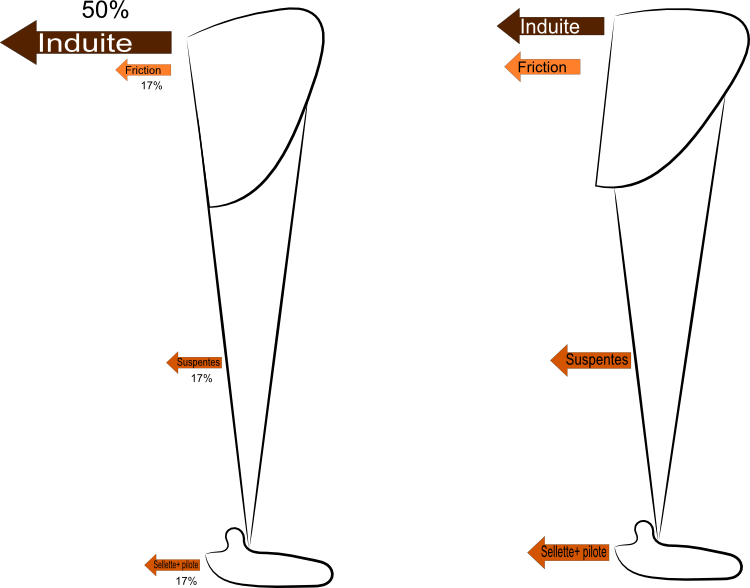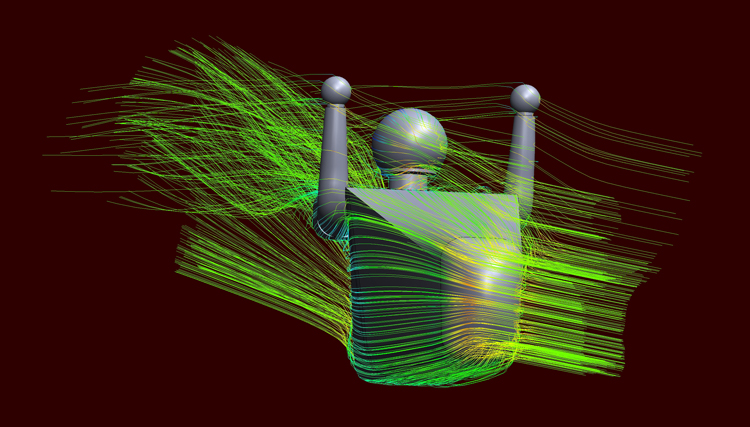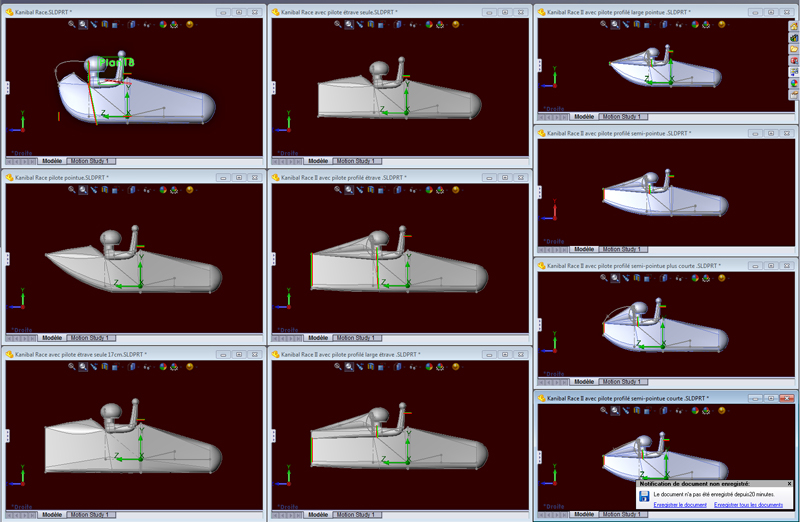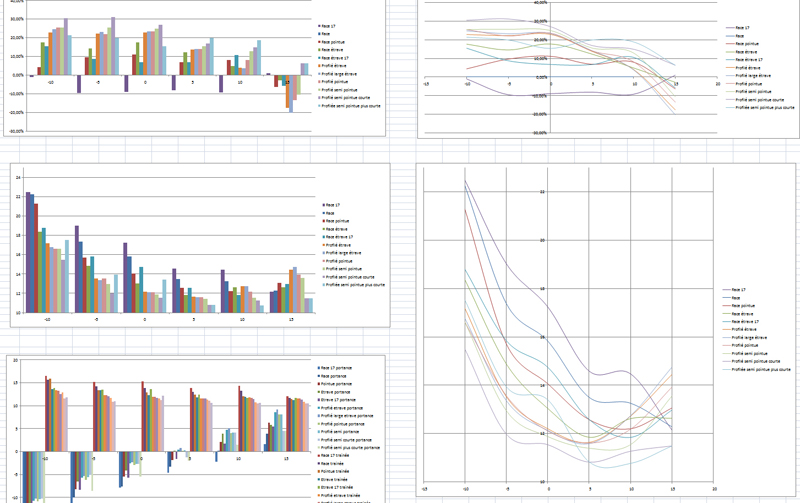
Reflection on the aerodynamics of harnesses
The search for increased performance in paragliding is partly based on minimizing drag:
Improvement of profile yields by improving the lift to drag ratio
Wing tip vortex reduction
Decrease of the overall line length (4 -> 3 -> 2 lines)
Reduction of pilot drag going from sitting to lying harnesses, cocoons and other profiled harnesses.
But what is the effect of each of these parameters?
Flying at maximum glide ratio, drag can be divided roughtly as follows:
50% induced drag (caused by the profile lift)
50% of frictional drag distributed in about equal proportion between the frictional drag of the fabric of the canopy, the lines and the pilot (the surface of 250m of line of average diameter 0.8mm is equal to 0.2m2, that is to say approximately the equivalent of a modern competition harness such as it could be measured in wind tunnel.)
At higher speeds, the induced drag will decrease (lift decreasing), while the other types of drag will increase with the square of the speed, but without knowing exactly their proportions.
Thus the pilot drag represents about 20-25% of the total drag of a paraglider.
Assuming that it is still possible to reduce this drag by 50% (i.e. a drag equivalent to a surface of 0.1m2) we could theoretically gain 1 point of glide on a glider of glide ratio 10.
But in fact, the change from a sitting to a lying position (in theory the change from a surface estimated at 0.35m2 to 0.2m2), that is to say a theoretical gain in drag of 40%, did not result in the equivalent theoretical gain in finesse.
In the same way, since the appearance of certain models with a rear profile, there has been no clear impact on the gain in performance, whereas the drag of the tail is clearly the penalizing element in aerodynamics.
So we wanted to investigate further. Since we did not have the means to launch a large-scale wind tunnel test campaign, we decided to take the path of numerical simulation, without deluding ourselves about the actual value of the results obtained, but rather betting on their comparative qualities.
Several shapes of profiles were drawn. The results were aimed at studying the drag generated by these shapes, at the global level, but also the decomposition of this drag into lift/induced drag.
But very quickly, another track emerged, the polar of these shapes. Indeed, it is useless to have the most aerodynamic shape possible, if we are not able to maintain it at its optimum position. In paragliding, the angle of incidence varies according to the flight regime by more than 5°, and nothing allows us to control our attitude in the air in a precise and fair way.
Comparisons between photos of threads laid on a current Kanibal Race harness and flows obtained in simulation show that the latter are clearly too clean, but not completely wacky.
The different shapes modeled are as follows:
Current Kanibal Race.
Tip profiling as is currently the trend.
Bow profile to avoid a downward lifting profile.
Profiling of head and shoulders, with different shapes
Without giving you the details of the results, compared to a current Kanibal Race, it appears that the current tip profiles don't bring anything, partly because they don't treat the problem, but also because the scoops needed to shape them compensate for their low gain.
Surprisingly, it seems that on these current geometries, it is much more interesting to have the airflow coming from the bottom (by about ten degrees, i.e. a very flat attitude), and not to have the cocoon well aligned in the airflow.
Indeed, the clearly penalizing zone being the upper part of the body, the neck, the head and the arms, by having a flow which arrives by below, the body of the cocoon "masks" this penalizing zone and improves the flow. Having your feet pointing slightly downward is clearly catastrophic.
So stop making fun of your buddies who have their feet in the sky, they are the ones who are right!
It is also clear that a clean profiling of the shoulders, head and neck helps a lot.
Bow-type profiles are good, but have little tolerance to the angle of attack of the airflow.
There is little to be gained by extending the length of the profile unnecessarily. What is gained may be lost in part by the increase in wetted area?
Some geometries are more tolerant than others to the direction of airflow.
In the end, the maximum potential gains are of order 20% with the optimal trim, out of the 20% drag imparted to the harness. That's 4-5%, so probably even less in reality. We are therefore talking about an improvement in glide ratio of the order of a few tenths of a point. Which remains worth it in competition.





